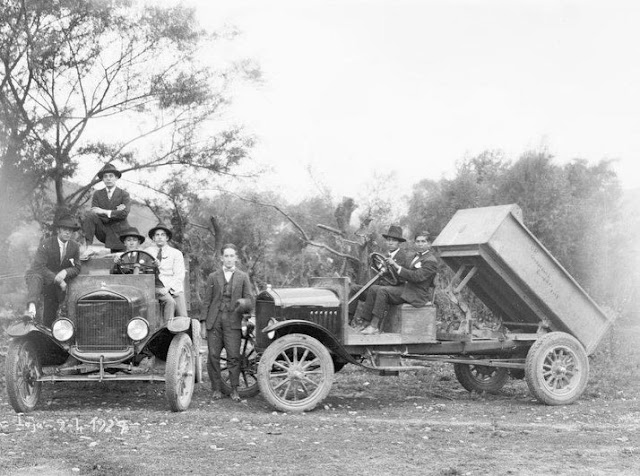FAQ: tell me about owning a car in Loja Ecuador
 |
| Lojano people were early adopters of automobiles. This image dated 1924. |
I like to read the Facebook expat forums because I learn a lot from the questions people ask. A topic that comes up a lot is about cars and driving in Ecuador. Typical questions people ask include: 1) Can I drive to Ecuador? 2) Can I bring my car? 3) How much does it cost to buy and own a car? 4) Are the roads, and other drivers, safe? 5) What is different about car ownership in Ecuador?
You cannot drive to Ecuador from North America because of the Darién Gap. The Darién Gap is the part of Central America that connects to South America and it does not have drivable roads. But even if it did, you are not allowed to bring a vehicle into Ecuador, unless you are a returning Ecuadorian citizen.
So if you want a private car in this country then you will need to rent (short term) or buy. In general, the prices for automobiles here are 20-30% higher than in the states. The top five most popular brands in Ecuador are 1) Chevrolet, 2) Kia, 3) Hyundai, 4) Great Wall, and 5) Toyota. Chevrolets are partially assembled in this country. There are about 2.3 million cars on the road for a population of 17 million.
 |
| People in Loja love their dogs |
One thing you should know if buying used - any unpaid violations (traffic tickets) transfer with the car and you will need to satisfy them before being able to register the vehicle in your name. Also know that if the vehicle you buy has been reported as stolen then it will be confiscated.
At the time of purchase a 12% VAT (value added tax) must be paid unless you buy an electric vehicle for under $35,000 USD, then the tax is 0% VAT. Ownership of a vehicle requires paying an annual tax based on the purchase price. There is also an annual contamination tax which is calculated based on the CO2 emissions and cylinder capacity of the vehicle. And, of course, annual inspection fees.
In Loja, there is no shortage of mechanics available to work your conveyance and usually they are honest and offer good value. But prices for replacement parts can be high because of import taxes. 70% of all cars sold in Ecuador are imported, and 30% are assembled here.
Even though labor maintenance costs are low, you will discover that wear and tear on vehicles is higher. The quality of gasoline (currently $1.85/gallon) is lower which causes catalytic converters to burn out sooner. Roads, especially in the campo (rural areas), tend to be in rougher condition which causes shocks and suspension parts to wear out faster. And climbing mountains and hills is tougher on transmissions, while descending is hard on brakes.
The FAQ question above about 'are the roads, and other drivers, safe?' is a little more difficult to answer. There are hazards in Ecuador you may not encounter in North America, such as landslides, road or bridge washouts, wide highways without marked lanes, people walking on the berms with pack animals, and occasional hail or snow conditions in the high Andes (but not in Loja). Some drivers will speed and take chances at passing, even in sections where it is not allowed, but I guess that happens pretty much worldwide.
Of course, if you choose to live in the city of Loja then you'll have access to some great, and inexpensive, public transportation, like buses and taxis, or you may opt to walk to most destinations. However, if you decide to pursue buying and registering a vehicle then I am available to help walk you through the process. It can be tricky, especially if your command of Spanish is limited.



Some months ago I looked into whether or not I could exchange my Australian driver's licence (DL) for an Ecuador DL.
ReplyDeleteIt seems that I must go to a Dept of Transport Office and pay to have a form that states my driving record; how many years I have had my licence and if I have had any infringements.
I was told I would then have to have that translated and then go to the ANT and they would give me an Ecuador licence. I believe this has to be done within ... 3 or 6 months.
Does this sound correct?
Hello Chey!
DeleteIf you need us to find specific information contact us at lifeinloja@gmail.com. We will be happy to assist you